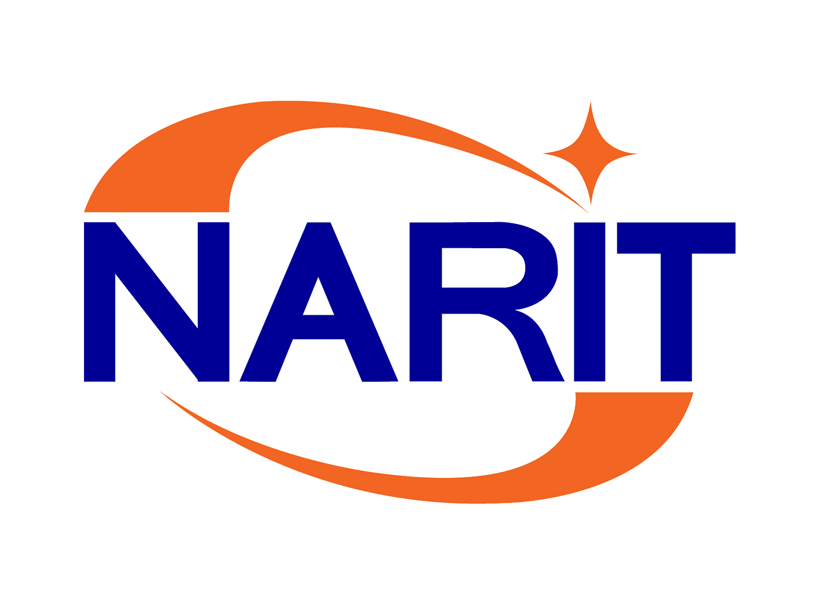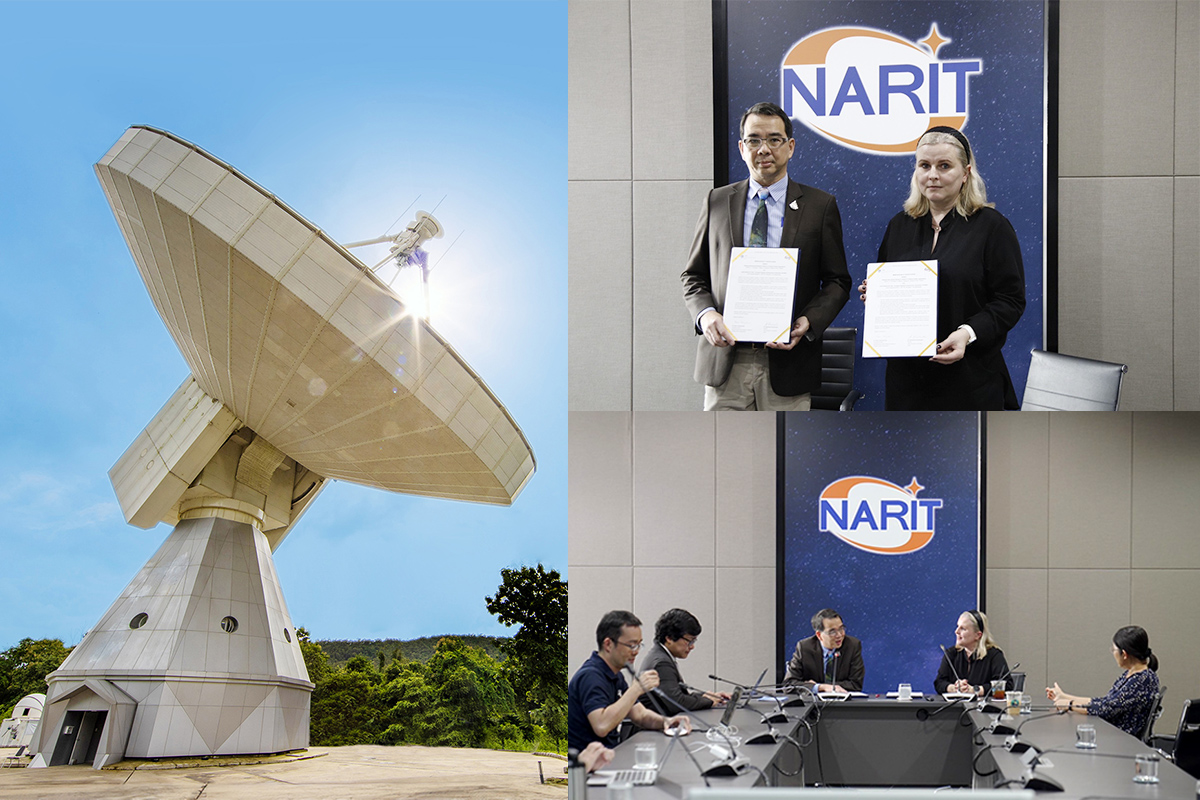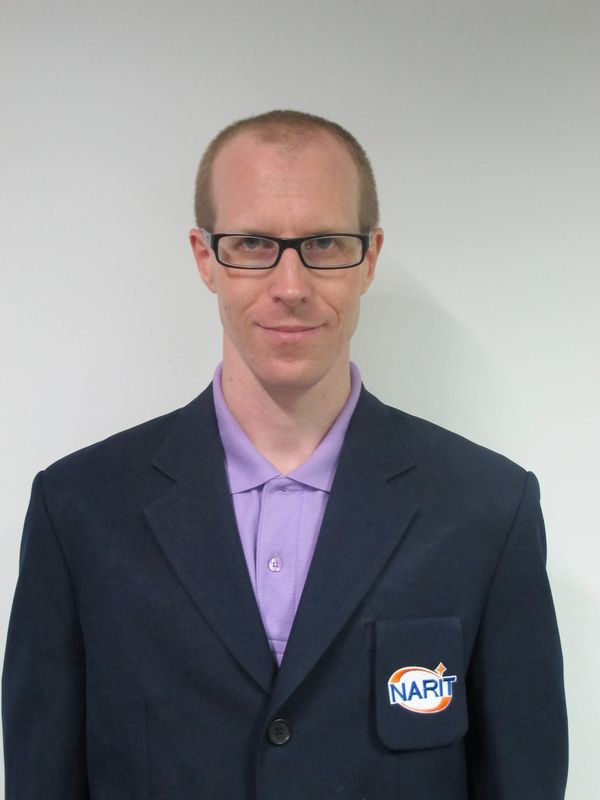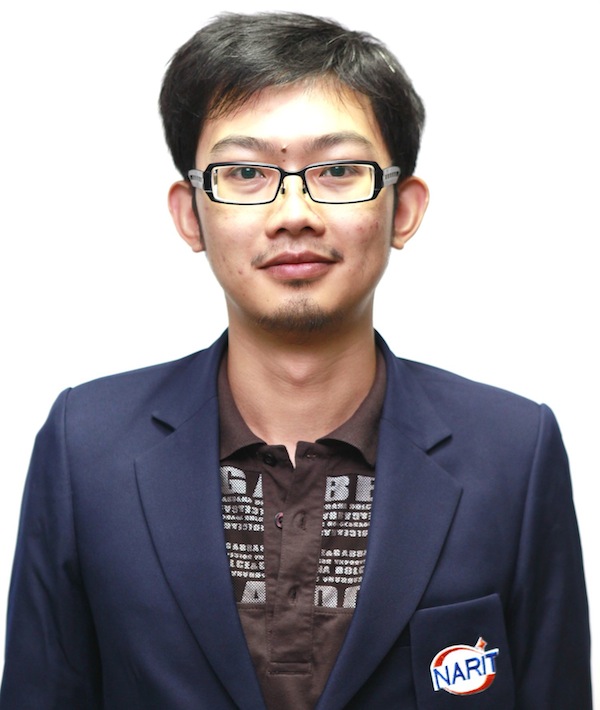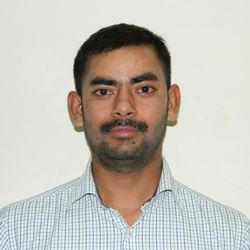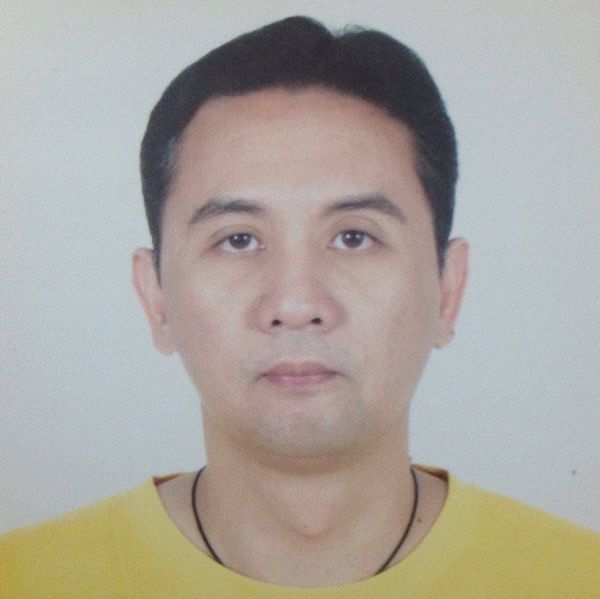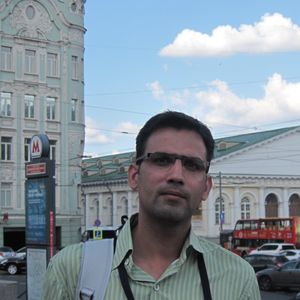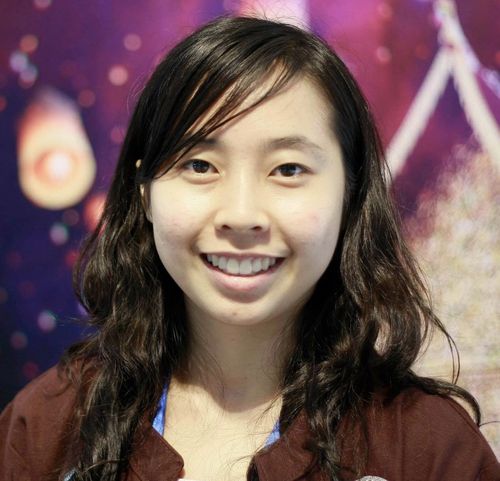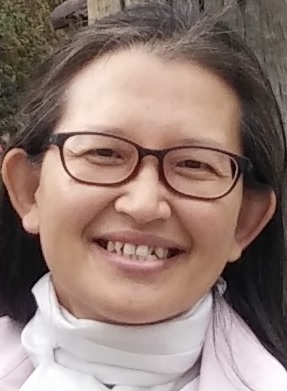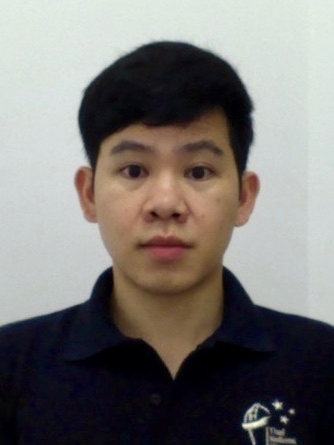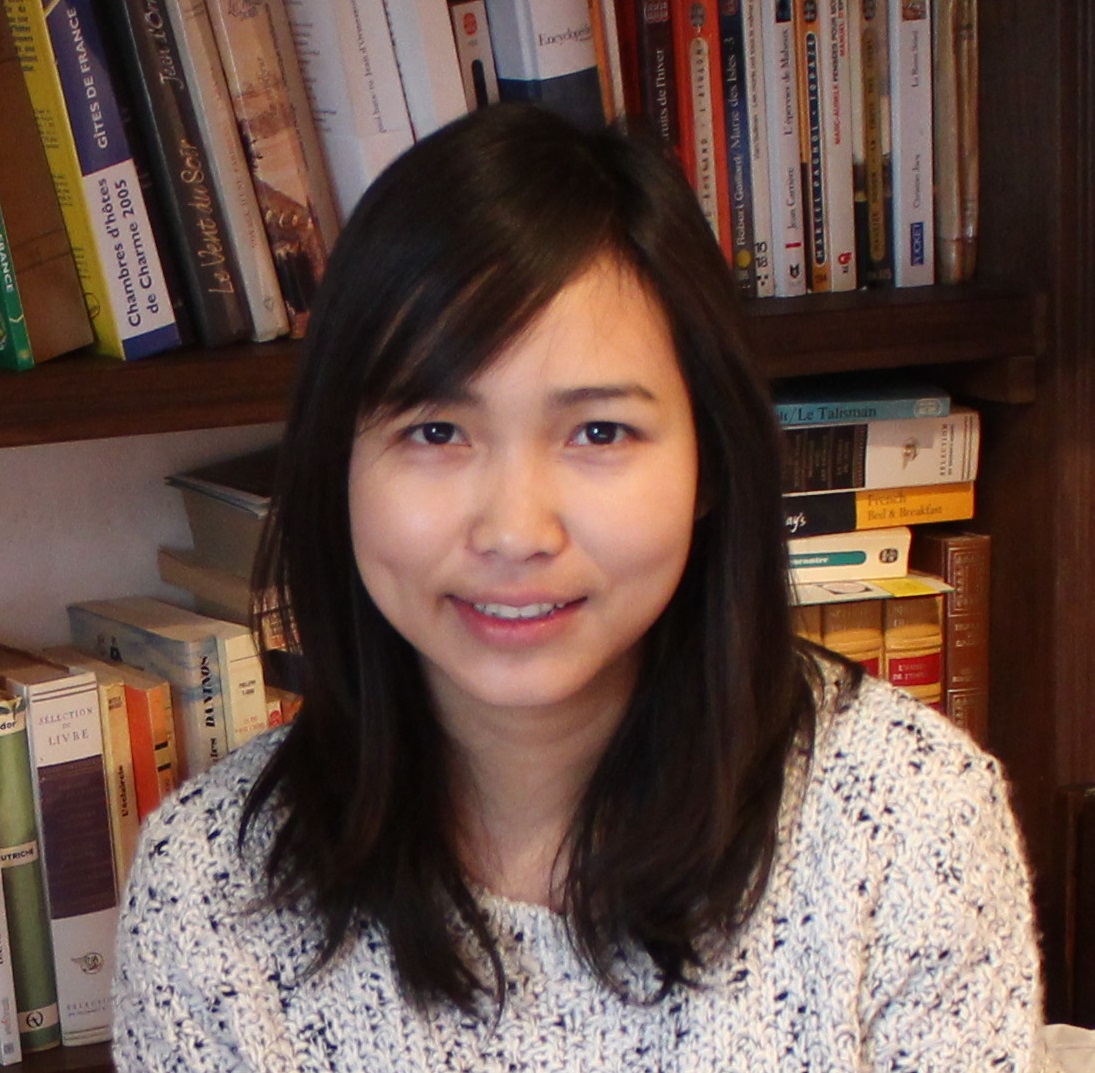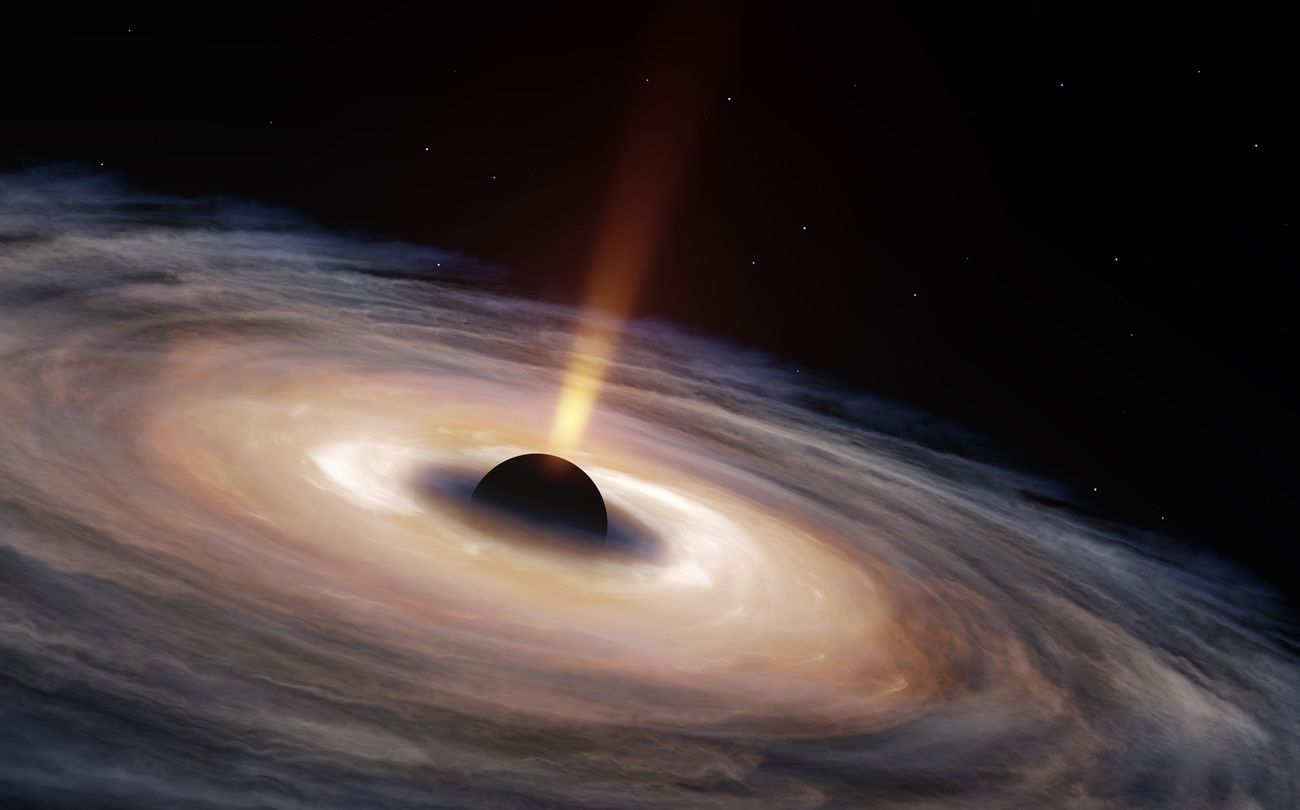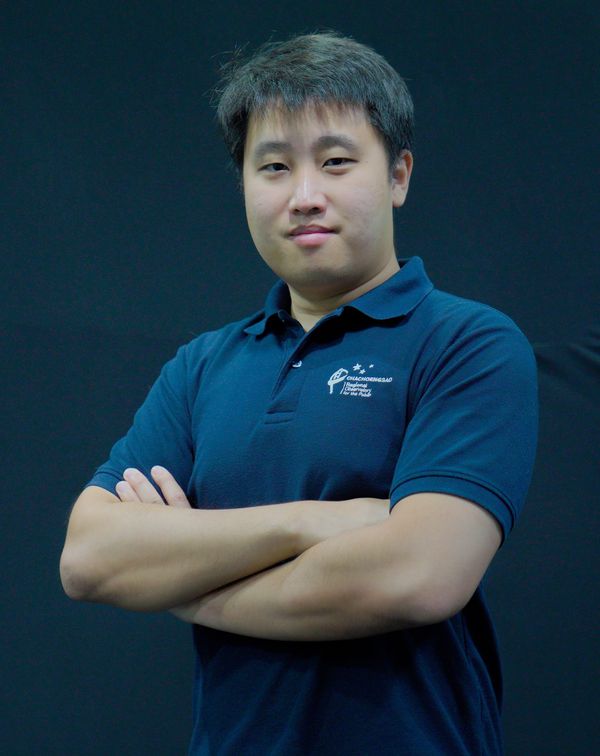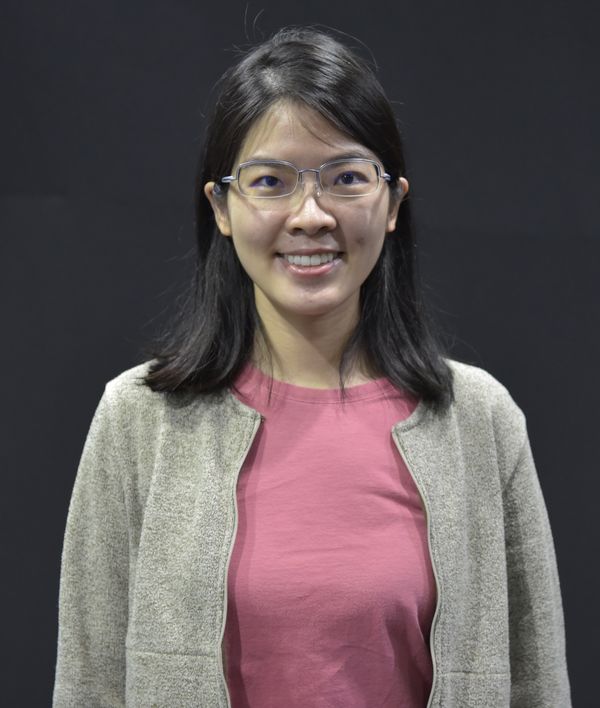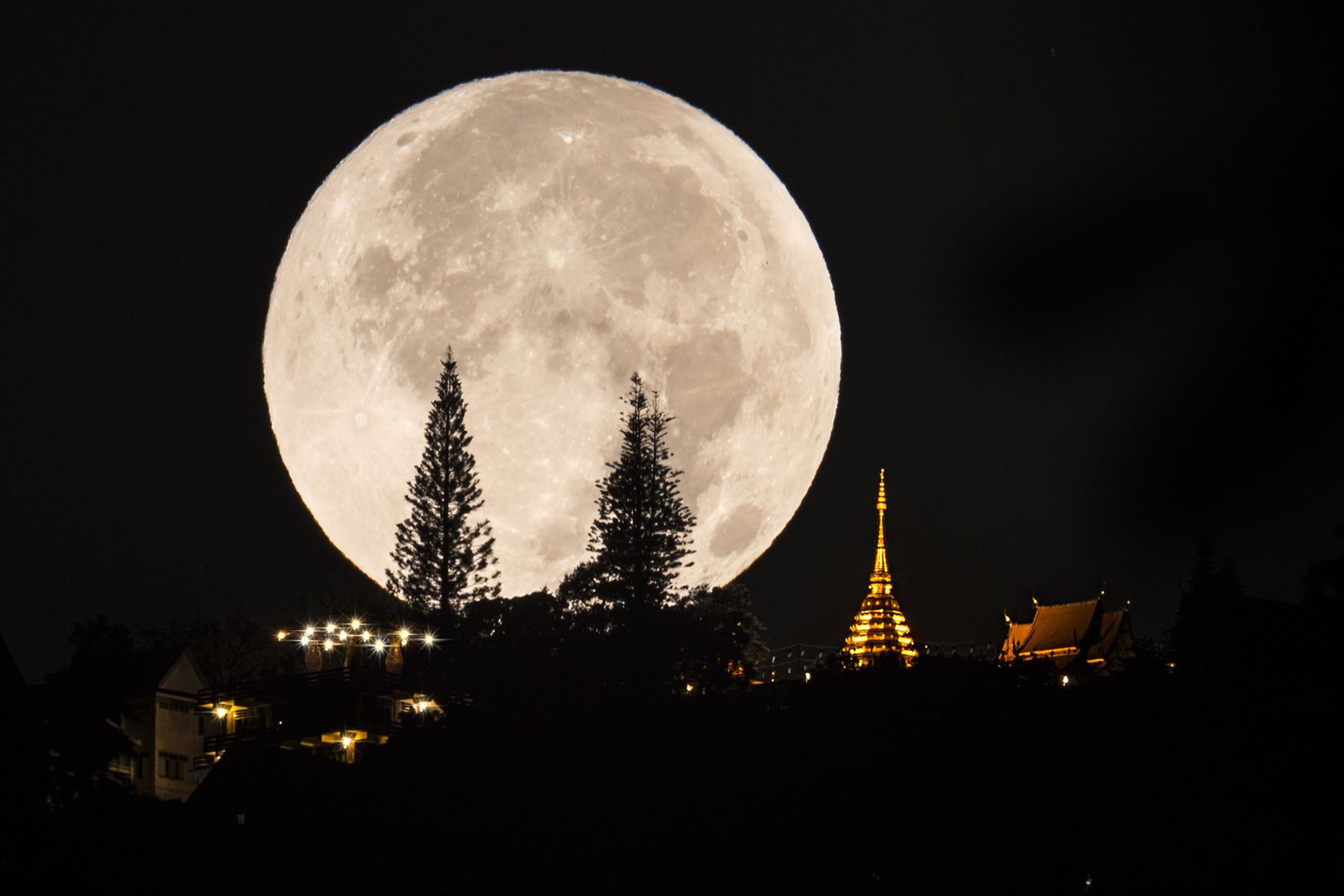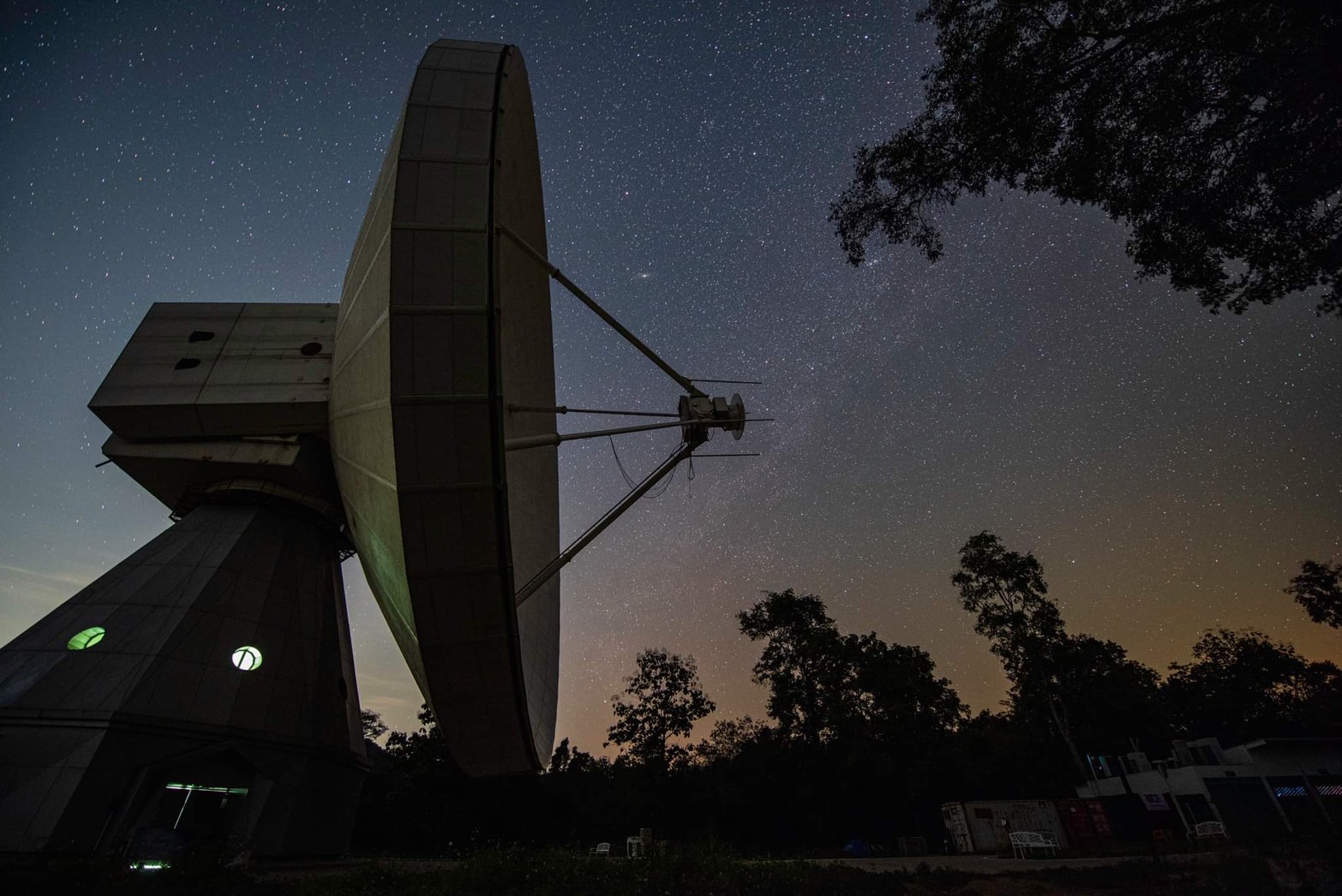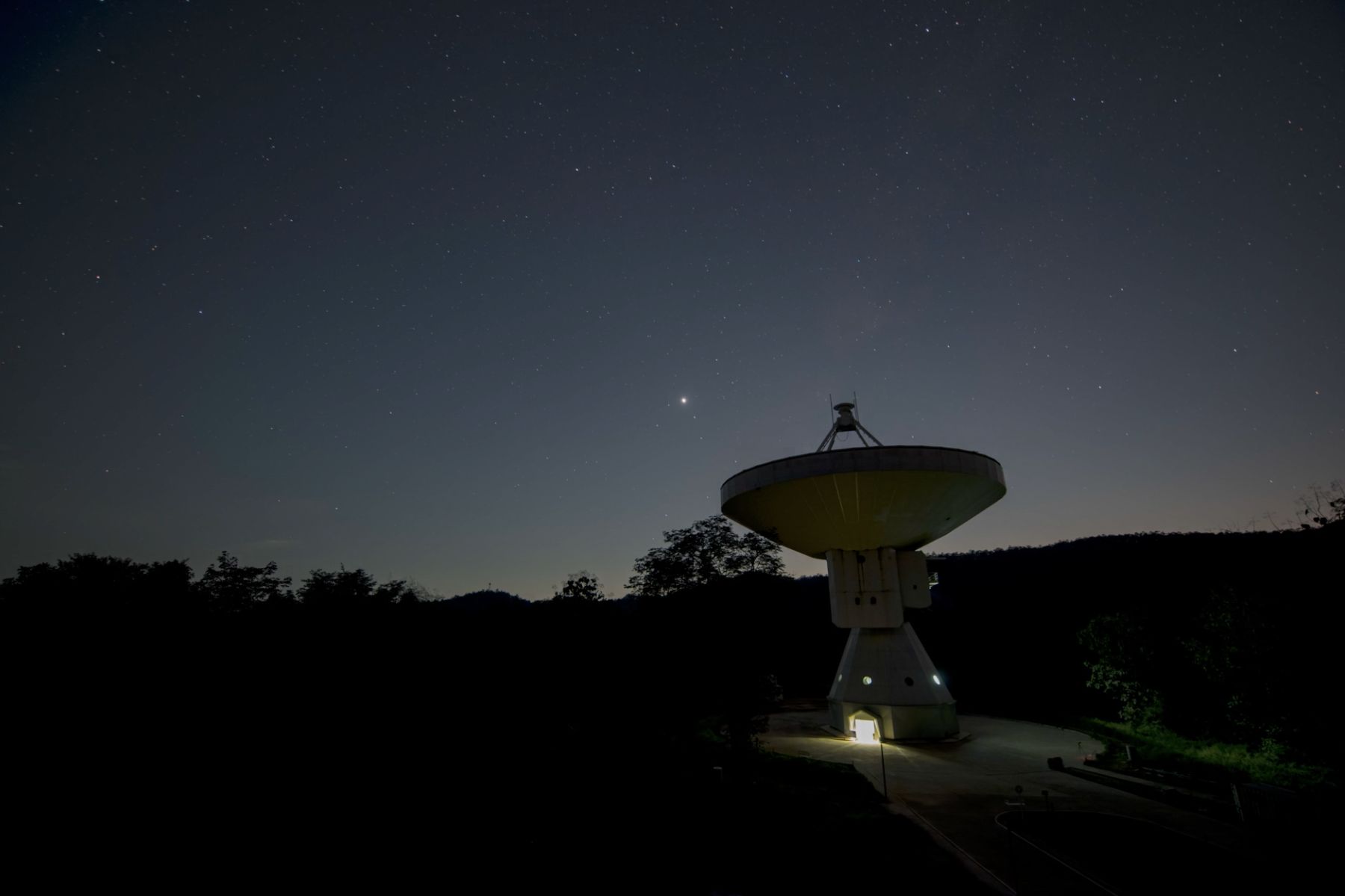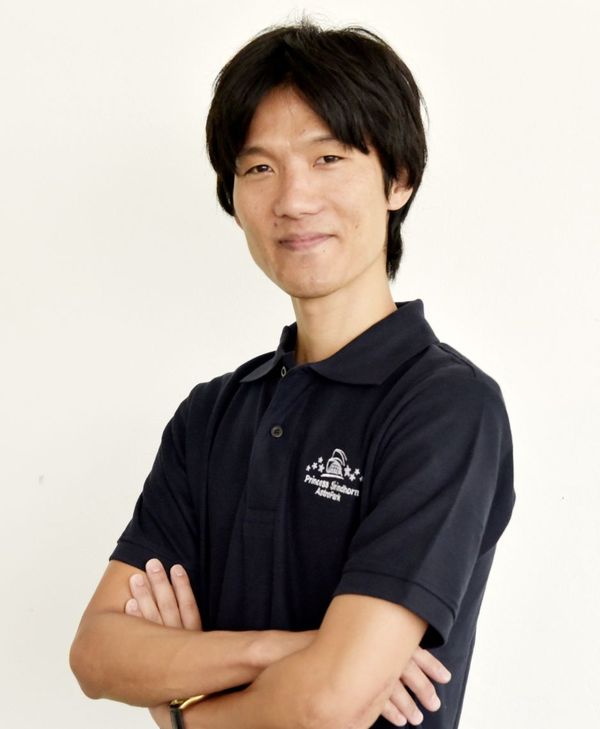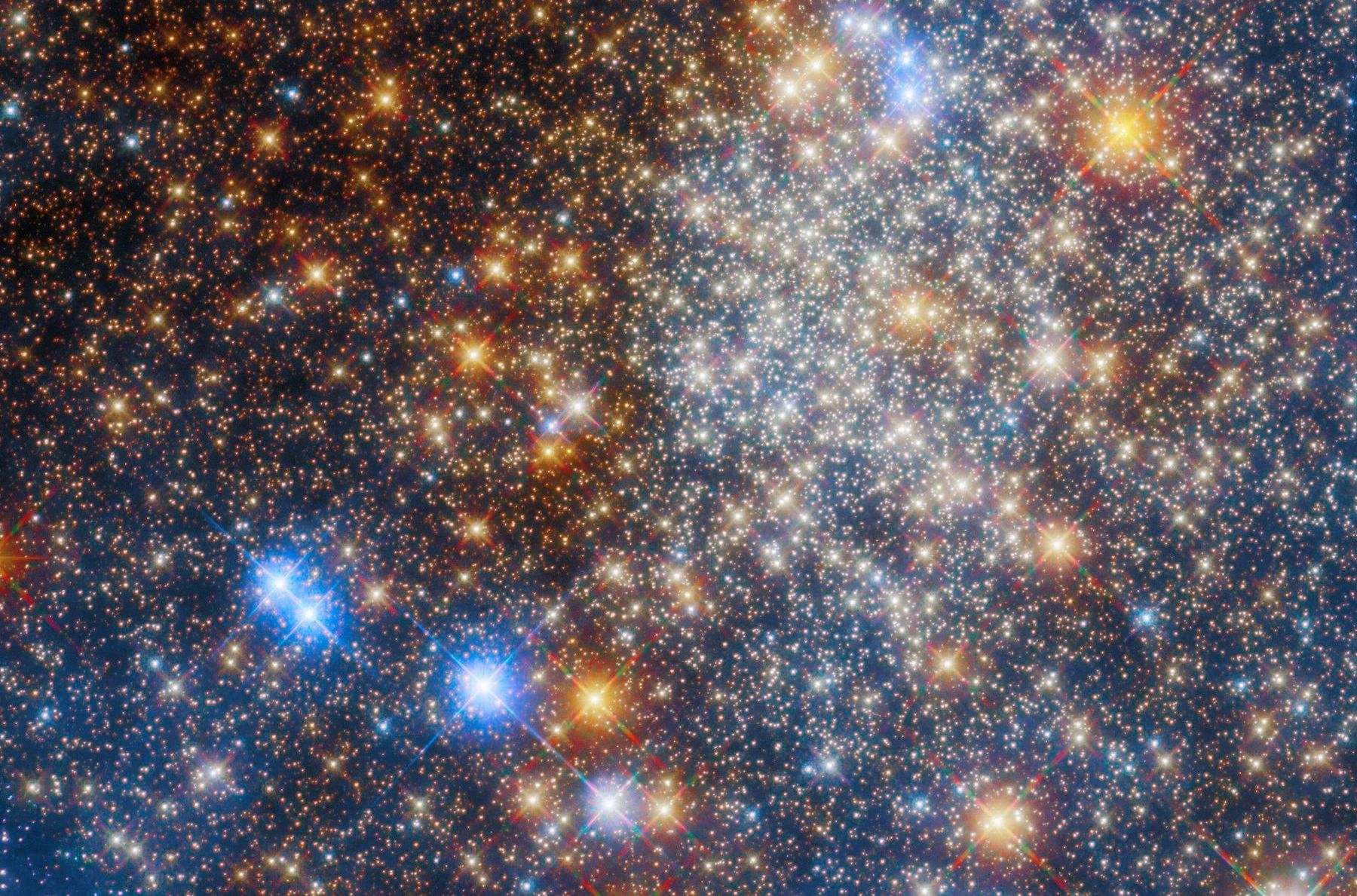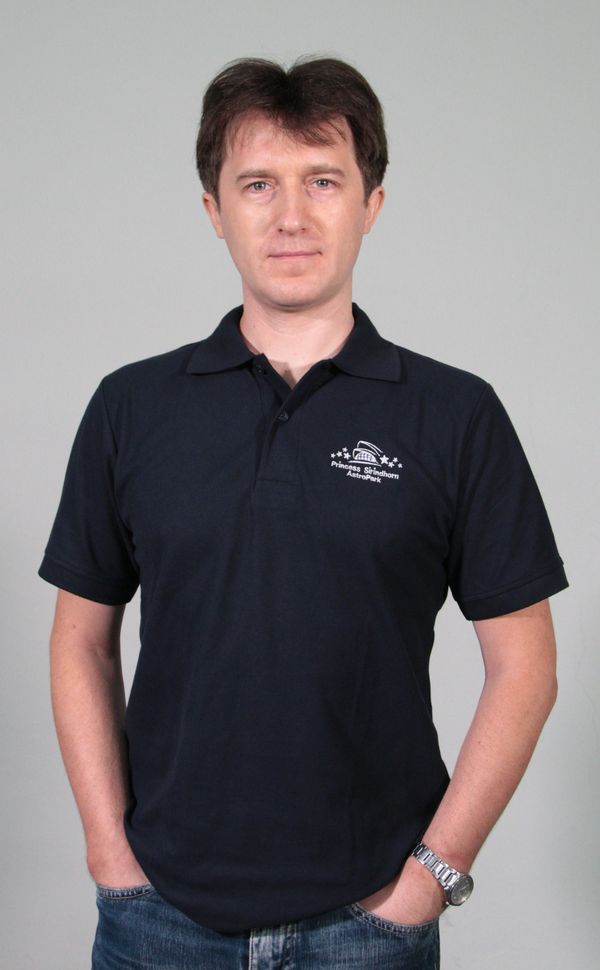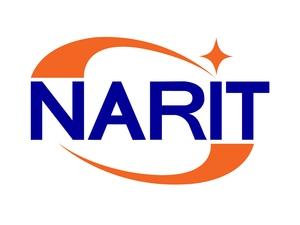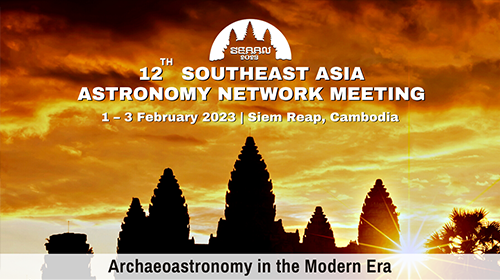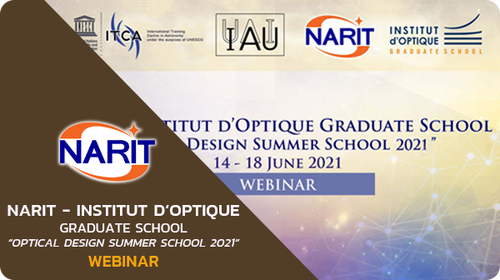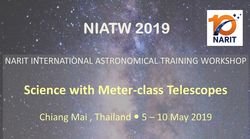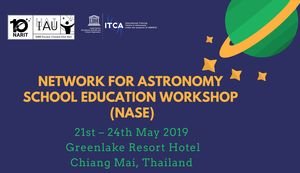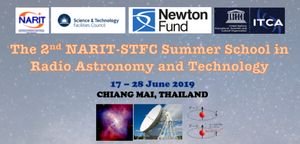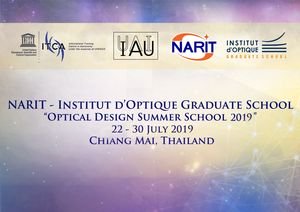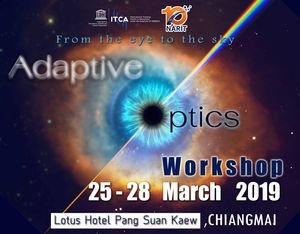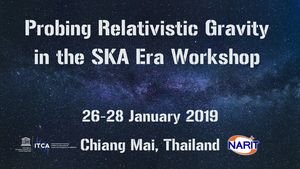Research @ NARIT
The NARIT research group is composed of researchers and scientists from various countries who are actively engaged in a number of different topics ranging from the Solar System, Stellar Astrophysics, Extragalactic Astronomy, Cosmology and just recently to Astronomical optics and Atmospheric Science. Post-doctoral fellows, and long-term international astronomers with well-established experience are also included in our vibrant research group. As a result, the combination provides a stimulating work environment for all. Coupled with an ease of access to the 2.4 meter Thai National Telescope of a short distance away from NARIT Headquarters, this even makes NARIT an ideal place to work with under 4 key sciences of NARIT as follows; 1) Impact from space, 2) Understanding astrophysical processes, 3) The study of exoplanets and search for life outside solar system and 4) Understanding the origin of the cosmos. The examples of our research are shown below.
Cataclysmic Variable
A cataclysmic variable (CV) is one of the most complicated yet most interesting close binary system to be observed. Hosting a white dwarf primary star and low mass main sequence secondary companion, this system exhibits many fascinating phenomena such as outbursts, super humps, oscillations, and flickering. CV research in NARIT covers both observational and theoretical studies for different type of CV sub-classes, including magnetic and non-magnetic systems, AM CVn star, and detached white dwarf binary. We are focusing on doing the follow-up observations of selected stars to obtain the orbital parameters of these systems. Aside from the observational research, we investigate the evolution scenario and population synthesis study of non-magnetic CV and post common-envelope binary.
We are also working on other systems with white dwarf companions, particularly binaries composed of a white dwarf and a main-sequence FGK type stars. We are actively trying to identify these binaries as they are the progenitor system of Supernova Ia.

Further information, contact : Dr. Puji Irawati
e-mail: This email address is being protected from spambots. You need JavaScript enabled to view it.
Exoplanets Search
Extra-solar planets discoveries and studies have become an attractive, fruitful and challenging area of modern astrophysics. Nearly two thousands of extra-solar planets have been discovered. Studies of exoplanets are important due to their potential to address fundamental questions about our Solar System and the theories of planetary formation.


Further information, contact : Dr. David Mkrtichian
e-mail: This email address is being protected from spambots. You need JavaScript enabled to view it.
Active Galactic Nuclei
Active galactic nuclei (AGNs) are well known relativistic objects by their extreme properties such as flux variability from radio to gamma waves, the largest luminosity in our Universe. The variability time-scales decrease with decreasing of observing wavelength and drop to several days in X-ray.¬_It gives the restriction to the size of central engine that cannot be larger than few light-days. The mass of the central object can be estimated through the luminosity and kinematics of gas and stars, and it is within the range of 106-1010 M☉ . So, only one theoretically known object, black hole, can fit to these parameters. A galaxy hosting an AGN is called an active galaxy. The activity in galactic nuclei (AGN) has been studied extensively by many research teams since its discovery in the 1950s. The determination of a size of the “broad-line region” (BLR) and mass of a supermassive black hole (SMBH) is one of the most important research area of AGN study despite a lot attention that was paid in the last years. In this term it is very important to know the internal properties responsible for nuclear activity. They could be revealed through study of isolated AGNs.

Further information, contact : Dr. Utane Sawangwit
e-mail: This email address is being protected from spambots. You need JavaScript enabled to view it.
Asteroseismology
Asteroseismology is a rapidly-developing, powerful tool of stellar astrophysics that accurately measures stellar parameters by virtue of stellar acoustic oscillation frequencies. The acoustic spectrum is directly sensitive to the structure of stellar interiors. Thus, this is a direct advantage of asteroseismology compared to classical spectroscopic and photometric methods. Asteroseismology research in NARIT is focused on oscillating mass-accreting components of interacting eclipsing binary stars, rapidly-oscillating magnetic chemically-peculiar stars and other types of variable stars across H-R diagram.
Further information, contact : Dr. David Mkrtichian
e-mail: This email address is being protected from spambots. You need JavaScript enabled to view it.
Modern Cosmology
What causes the late-time accelerating expansion of the Universe? And how do the large-scale structures (e.g. galaxies, groups and clusters of galaxies) form and evolve? These are the main key questions of modern cosmology and astrophysics. We can further our understanding on these important questions through astronomical observations such as cosmological redshift surveys of galaxies and quasars, utilizing probes such as Baryon Acoustic Oscillations (BAO), Redshift-Space Distortions (RSD), gravitational weak lensing and Integrated Sachs-Wolfe (ISW) effect. We are also interested in using measurements of primordial non-Gaussianity in the galaxy clustering to learn more about physics of the early Universe. Other research interests include galaxy formation theory and the role Super-Massive Black Holes (SMBH) as an engine of the Active Galactic Nuclei (AGN) plays on the galaxy evolution.

Further information, contact : Dr. Utane Sawangwit
e-mail: This email address is being protected from spambots. You need JavaScript enabled to view it.
Radio Pulsars and Searches
Fast-rotating neutron stars, or pulsars, are one of the most unique objects in the galaxy. Each of them has the size of Bangkok but weighs almost twice heavier than the Sun. Because of the extremes in both the rotational dynamics and the magnetic and gravitational fields, pulsars are perfect tools for studying fundamental physics. Today, over two thousands pulsars have been discovered. Yet, several aspects of pulsars are not fully understood. We explore the relationship between different types of pulsar’s emission modes and models, using observational data from large radio telescopes around the world.
The most-successful Parkes Multibeam Pulsar Survey (PMPS) has led us to discover over a third of currently known pulsars. The long-term monitoring programme for PMPS pulsars has been initiated, which now contains over 35,000 observations from 785 sources. We exploit this dataset for backwards discovery, as well as, searching for time-variable and intermittent radio sources.
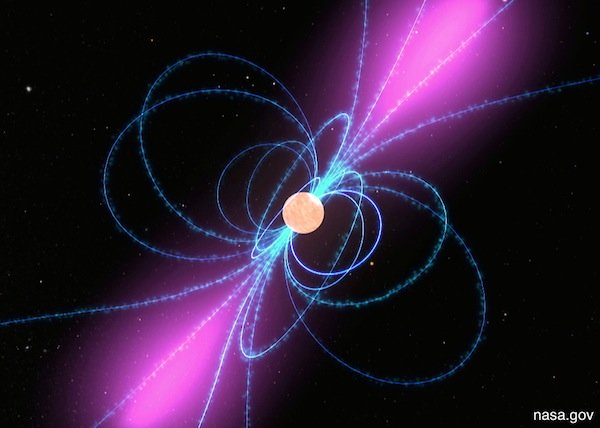
Further information, contact : Dr.Phrudth Jaroenjittichai
e-mail: This email address is being protected from spambots. You need JavaScript enabled to view it.
Thai Radio Astronomical Observatory (TRAO)
NARIT has initiated a major effort in radio astronomy, a relatively novel area in South-East Asia, with the ultimate goal of establishing the first VLBI station in Thailand. A feasibility study and preparation project is being conducted for establishment of the Thai radio astronomical observatory (TRAO), with collaborations with institutes from Korea, Japan, Australia, UK and Germany. TRAO, which will host a 45-m class radio telescope and a 13-m VGOS geodetic antenna, will play a major role in development of radio astronomy and VLBI geodesy in Thailand and SEA region. We are conducting Radio Frequency Environment and atmospheric condition surveys in the Northern part of Thailand for suitable locations.

40-m Yebes Telescope in Spain
Further information, contact : Dr.Phrudth Jaroenjittichai
e-mail: This email address is being protected from spambots. You need JavaScript enabled to view it.
Small Radio Telescopes (SRTs) for University
Education in high school and university levels is undeniably important for attracting young generation into Science and Engineering. NARIT has been developing course modules in Radio Astronomy and Radio Telescope Fundamentals to be offered by universities in Thailand by 2016. The Small Radio Telescope (SRT), which has a 4.5-m diameter, is primarily working at 21-cm for detecting HI emission from the Milky Way, and for observation of bright radio sources in the sky. We are working on expanding the observing frequency coverage of the SRT.

NARIT 4.5-m SRT
Further information, contact : Dr.Phrudth Jaroenjittichai
e-mail: This email address is being protected from spambots. You need JavaScript enabled to view it.
Star Formation
Stars are the building blocks of the cosmos, and yet the processes by which they formed are not fully understood. The problem of star formation underlies many physical processes involving gravity, turbulence and magnetic field. Stars are continuously being formed in Galaxy enabling direct observations and investigations of the star formation process. Consequently, the physical processes of star formation can be investigated by observations. Star formation research at NARIT comprises investigation (from X-ray through radio) of Galactic star forming regions using multiwavelength imaging and spectroscopic observations.

Multiwavelength view of Eagle nebula (PC: http://sci.esa.int/herschel/49866-multi-wavelength-view-of-messier-16/ )
For further information, contact: Dr. Ram Kesh Yadav
Email: This email address is being protected from spambots. You need JavaScript enabled to view it.
Pre-Main-Sequence Variability
In young star clusters a large number of member low mass stars are found in pre-main-sequense (PMS) phase. Based on their mass these PMS stars are classified into T Tauri stars (TTSs) (mass <= 3 M☉) and Herbig Ae/Be stars (mass range ~3-10 M☉). These TTSs show variation in their brightness at all wavelengths, from X-ray to infrared with time-scale ranging from a few minutes to years. The photometric variations are believed to be originated from several mechanisms like rotation of a star with an asymmetrical distribution of cool spots, variable hot spots or obscuration by circumstellar dust. The Herbig Ae/Be stars also show variability possibly due to pulsation as they move across the instability region in the HR diagram on their way to the MS. PMS variability research at NARIT includes time-series observations of young open clusters with the aim to detect these variables and to constrain their properties.
 |
|
 |
Left: Light curve of V409 Tau phased to a 4.723 day period, Right: Spectral Energy Distribution fit for the V409 Tau system (Rodriguez et al. 2015).
For further information, contact: Dr. Ram Kesh Yadav
Email: This email address is being protected from spambots. You need JavaScript enabled to view it.
Close Binaries
Late Type Close Binaries (LTCB) are important objects to be observed, studied, and explained in modern astronomy and astrophysics. The following issues of them are needed to be addressed in detail and quantitatively:
1) the Properties and inner Structures of Low Mass Contact Binaries;
2) the Formation of Contact Binaries: what are their progenitors;
3) the Evolutionary tracks of Close Binaries and what are their final fates.
Our photometric studies of K-type close binaries will provide us information about their physical and orbital properties. Combining with the statistical analysis, the results will shed light on the key sciences which we have mentioned. Moreover, some questions are also carefully discussed, e.g. the A/W type phenomenon of late type contact binaries.
For further information, contact: Dr. Liu Nian-Ping
Email: This email address is being protected from spambots. You need JavaScript enabled to view it.
Astronomical Optics
The NARIT optical laboratory comprises all the activities and facilities related to the research and development of new instruments in the following area: telescope design, high dynamic & resolution imaging systems and spectrographs. This optical laboratory comprises: optical software for and simulation activities and 1 optical room for experimental activities that includes: 1 reference optical mirror (Φ = 200 mm, surface error λ/10), wavefront sensor, alignment telescope, stable tungsten and LED sources, alignment laser, CCD detector and video cameras.
The current projects includes the preparation of the TNT optical alignment, the development of a focal reducer and spectrographs and research in coronagraphy. Our activities also includes training in optical design for students, researchers and engineers through the organization of international workshops


Further information, contact : Dr. Christophe Buisset
e-mail: This email address is being protected from spambots. You need JavaScript enabled to view it.
Atmospheric Science
Atmospheric Science is an umbrella term for the study of the Earth's atmosphere and has also been extended to the field of planetary science and the study of the atmospheres of the planets of the solar system. It includes meteorology (including atmospheric chemistry and physics with a major focus on weather forecasting), climatology (the study of long and short-term atmospheric changes that define average climates and their change over time, due to both natural and anthropogenic climate variability), as well as aeronomy (the study of the upper layers of the atmosphere, where dissociation and ionization are important). In NARIT, we aim to understand the effects of space weather and aerosols on climate and society using state of the art instrumentation and models.

Further information, contact: Dr. rer. nat. Ronald Macatangay
e-mail: This email address is being protected from spambots. You need JavaScript enabled to view it.
